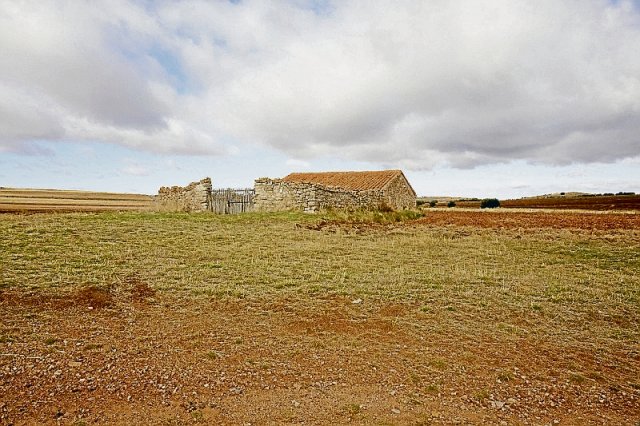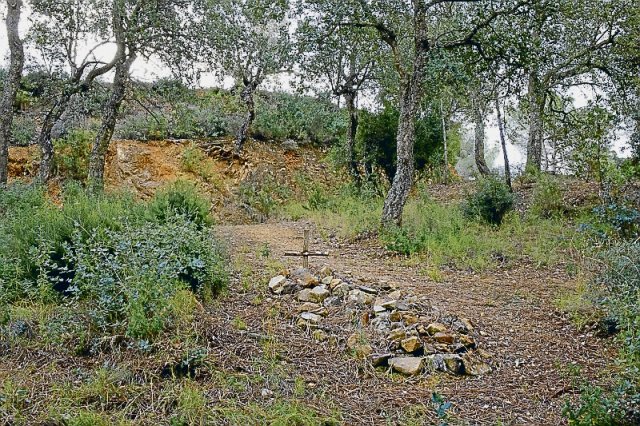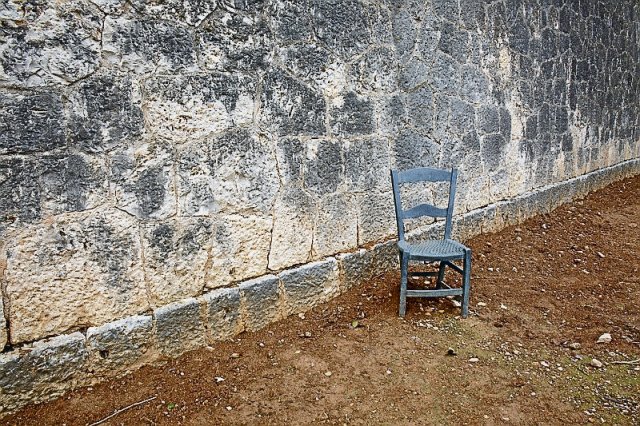Wall of the central cemetery in Palma, Mallorca, where many republicans were executed.
Photo: @Espe Pons
During the Spanish Civil War, which ended 85 years ago in March 1939 with the bloody victory of the Franco putschists, the camera was used as a weapon on both sides. Impressive images served as a documentary and propaganda tool to underline one’s own claim to the legitimacy of one’s own struggle and to denounce the actions of one’s opponent in public. Despite the military defeat of the Spanish Republic, the pro-republican photographers remained ahead. Not only for aesthetic reasons, photographs such as the well-known snapshot of the war reporter Robert Capa, who captured the death of a Republican soldier who died in the field, were more popular than corresponding photo motifs from the Franco camp.
In contemporary conceptual photography, the image of the Spanish war continues to be characterized by commitment, as if the last shot had not yet been heard. The approach of Catalan Espe Pons, born in Barcelona in 1973, is unusual. Your approach to the historical topic is spatial. For her work “Tierra,” the photographer went in search of clues to various places in Spain where Republican victims of the civil war and Francoist repression had been anonymously and collectively buried.
“Tierra” means both earth and land. Both dimensions are illuminated by Espe Pons. Her motifs are framed by unspectacular landscapes, but also walled cemeteries, traces of human civilization. You can see seemingly harmless meadows, idyllic forest clearings and hills, but also monuments that testify to the efforts of the current government to achieve the rehabilitation of the victims of Francoism against the stubborn resistance of the conservatives.
The volume contains around 100 photo motifs by Espe Pons in color. Background information (in Spanish and English) on the historical tragedy of the event is provided by separate blocks of text written by experts. What at first glance seems like a documentary is actually more like art. Anyone who looks at the focused places of horror and unfinished grief is confronted less with what is depicted than with what is absent. The rooms appear as silent reminders of sinister actions, as placeholders for skeletal people who remain nameless and invisible to the viewer. A depicted shovel appears as a metaphor for what lies beneath the earth’s surface.
Contrary to the trend in the media to illustrate excavations and to forensically “give a face” to exhumed victims using DNA analysis, in “Tierra” the usual forms of concretization are avoided and the level of abstraction is maintained until the last shot. Following the afterword by Ofelia Ferrán from the College of Liberal Arts at the University of Minnesota, it could be added that the time montage of the “deceptively simple” image compositions is given to the viewer by the artist as a commission.

Murdered people were also exhumed near Argente in Teruel.
Photo: @Espe Pons
Memory and landscapes have always been the main themes of Espe Pons’ photography. While the Catalan artist initially moved entirely on an abstract level, she has recently increasingly approached her objects from a socially critical perspective.
In 2019, she addressed the civil war and the post-war period for the first time, against the background of a personal confrontation with the fate of a great-uncle who was executed in Barcelona by the Franco regime. The result of this reflection was the work “Sota la llum del mar” (Under the Sea Light). The recordings were also shown outside of Spain in exhibitions, including in the USA at the Jersey City Theater. And »Tierra« promptly managed to be nominated for a French photo non-fiction prize (Recontres d’Arles).
With the volume »Flucht« that follows shortly afterwards, Espe Pons offers another work that is dedicated to the topic of anti-fascism and photographically processes biographical-geographical vanishing points from Walter Benjamin’s exile. For her new, ongoing project, she returns to the actors of the Spanish Civil War. This time the focus should be on the women of the International Brigades.
The photo artist did not reveal to the author of this article what the concept of a photographic implementation would look like in this case; She shrouded herself in a gentle, smiling silence. Whether “Tierra”, “Flucht” or the Interbrigadists – a translation of the books and also an exhibition of Espe Pons’ photographs in this country would be very welcome.

Grave of an unknown soldier, probably an Interbrigadist, near Cassà de la Selva
Photo: @Espe Pons
Espe Pons: Earth. Madrid, 268 S., 124 Photos, geb., €43.
Subscribe to the “nd”

Being left is complicated.
We keep track!
With our digital promotional subscription you can read all issues of »nd« digitally (nd.App or nd.Epaper) for little money at home or on the go.
Subscribe now!
judi bola sbobet88 link sbobet judi bola
